Dust collector rotary valves, also known as rotary airlocks or rotary feeders, are essential components in many industrial processes that involve the handling of bulk materials and are very commonly used in dust collection systems. These valves play a crucial role in controlling the flow of material, preventing air and pressure loss, and ensuring minimal product loss during processing. Selecting the right dust collector rotary valve is of utmost importance to maintain system efficiency, safety, and product integrity. In this article, we’ll delve into the different types of rotary valves and the key considerations for selecting the right one for your specific application.
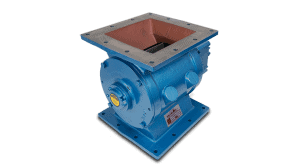
Understanding Rotary Valves
Rotary valves are mechanical devices that facilitate the transition of materials from pressurized environments, such as dust collectors, to unpressurized points, like storage bins or drums. They come in various types, sizes, and materials to suit different industrial applications.
Types of Rotary Valves
- Drop-Through Rotary Valve: In drop-through valves, product feeds into an inlet at the top, typically from a gravity-fed hopper, and exits through an outlet below. These valves are often used in applications where the primary function is to maintain air pressure differentials.
- Convey Through (Blowing Seals) Rotary Valves: In convey-through valves, product enters the inlet and is directly fed into a pneumatic convey line connected to ports on the bottom sides of the housing end covers. These are more suitable for applications where height limitations exist, and the valve feeds a pneumatic conveyor directly.
Choosing the Right Rotary Valve
Selecting the right rotary valve depends on several critical factors:
1. Application Type:
- Airlocks: Used in applications where maintaining pressure differentials is crucial. They allow material to flow between different pressure zones and are commonly found in cyclone and baghouse outlets.
- Feeders: These valves control the rate at which material flows through the valve by metering the bulk powder material’s flow. They are suitable for low-pressure or gravity-fed applications, such as filling packaging machines.
- Airlock Feeders: Combining the functions of airlocks and feeders, these valves are versatile and can be used for feeding pneumatic conveyors or moving products in and out of pressure and vacuum receivers.
2. Materials of Construction:
The choice of materials for the housing, rotor, drive, and accessories is crucial to match the requirements of your product and the operating environment. For example, some applications may require stainless steel for its resistance to chemicals, while others may need cast iron or chrome-plated cast iron for durability.
Adjustable rotors allow for tips to be adjusted to account for wear, and flex tip rotors are designed to maintain an airtight seal while preventing material jams. These are just a couple examples of the type of material and design options available.
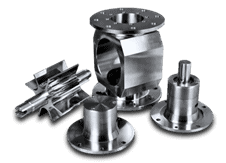
Sanitary rotary valve components
3. Ease of Cleaning:
For applications where frequent cleaning is necessary, choose a rotary valve designed for easy disassembly. Look for valves that facilitate access to product contact surfaces for cleaning. Hygienic applications should ensure the valve’s surface finish, seals, and construction meet regulatory standards.
Typically, open end rotors are easier to clean and maintain. These are often used with lighter or finer materials, to minimize the risk of material becoming trapped in the space between the endplates and rotor disc.
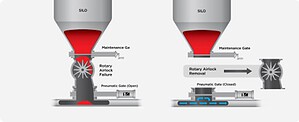
4. Explosion Protection:
In environments where explosion isolation is required, make sure the valve design complies with standards like NFPA to ensure safety in case of an explosion.
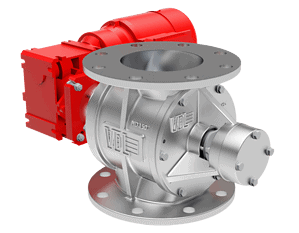
NFPA compliant rotary valve
5. Pressure:
The pressure of your conveying system is a key determinant of the required valve durability. Dilute phase pneumatic conveying systems typically operate between 4 and 8 PSI, while dense phase systems operate over 15 PSI. Valves for high-pressure or vacuum applications need to be designed to withstand the conditions, possibly requiring additional venting systems to prevent air leakage.
6. Temperature:
Consider the operating temperature, as extreme heat or cold can impact the choice of materials, rotor design, and airlock capabilities of the valve. Ensure the selected valve can withstand the temperature conditions of your application.
Selecting the right dust collector rotary valve is a critical decision for maintaining the efficiency and safety of your industrial processes.
By considering the type of valve, materials of construction, ease of cleaning, explosion protection, pressure, and temperature, you can make an informed choice that ensures optimal performance, minimal product loss, and a safe working environment. Collaborating with experts in this field such as Baghouse.com can be invaluable in making the right selection for your specific application.
Contact Us to Speak to One of Our Baghouse Experts.
For more baghouse related training and information, be sure to check out our Baghouse Online Training page.


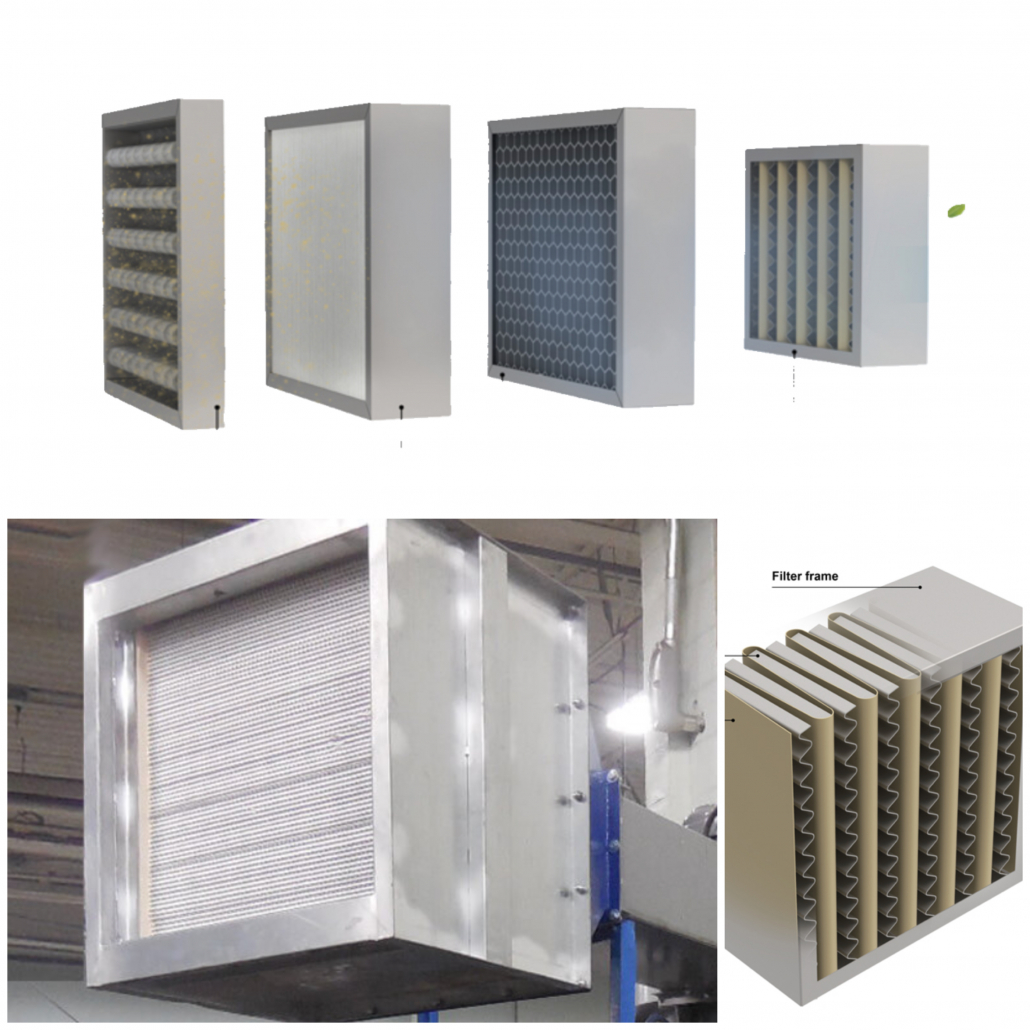
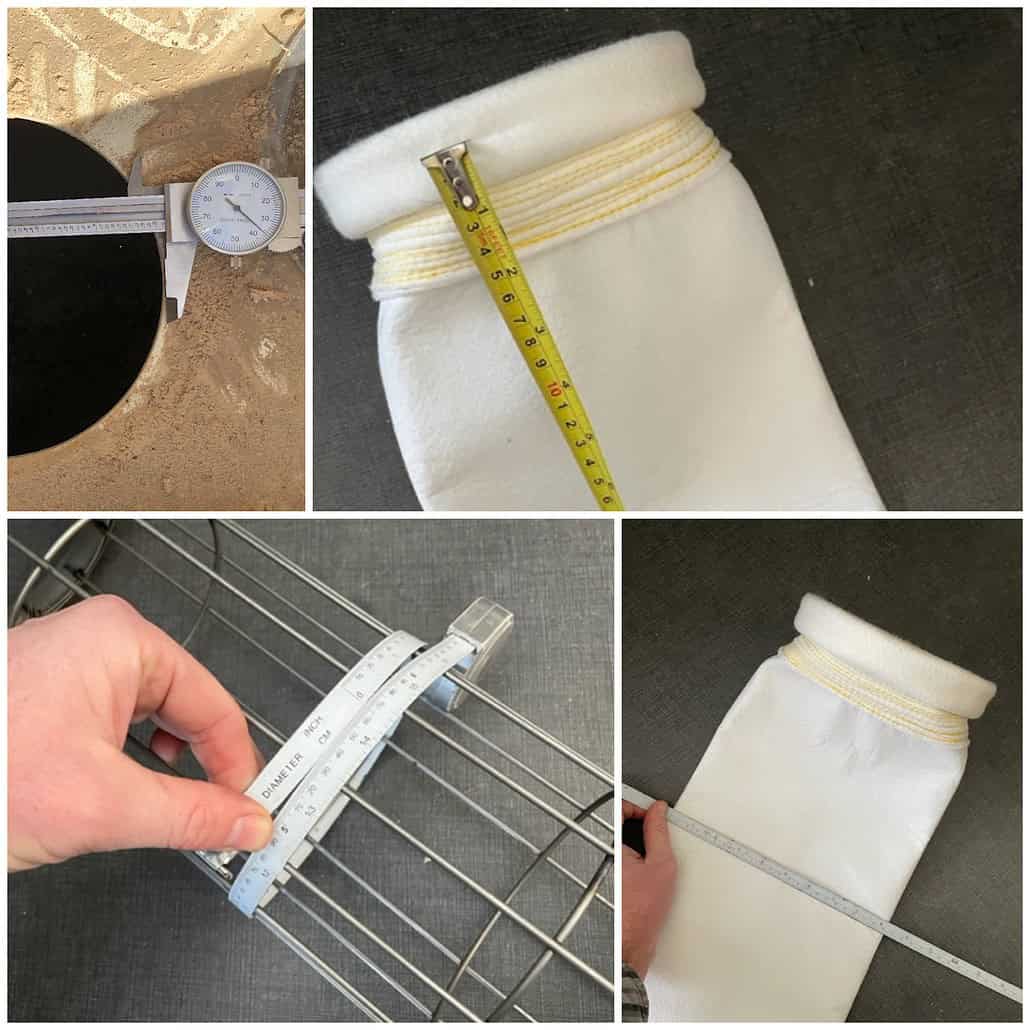

 Baghouse.com 2023
Baghouse.com 2023